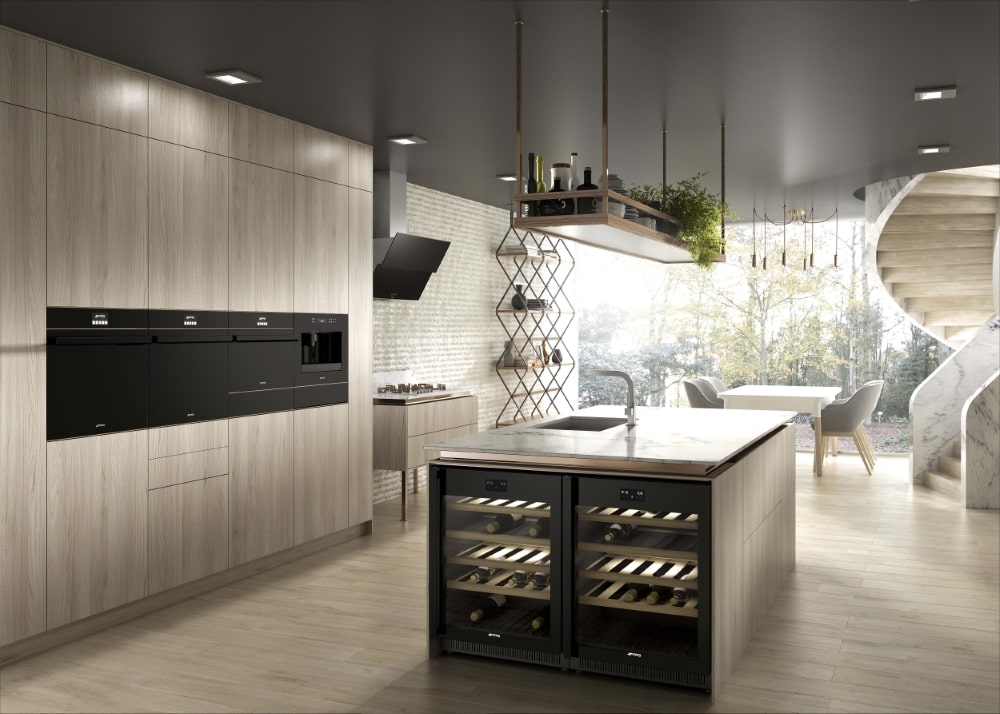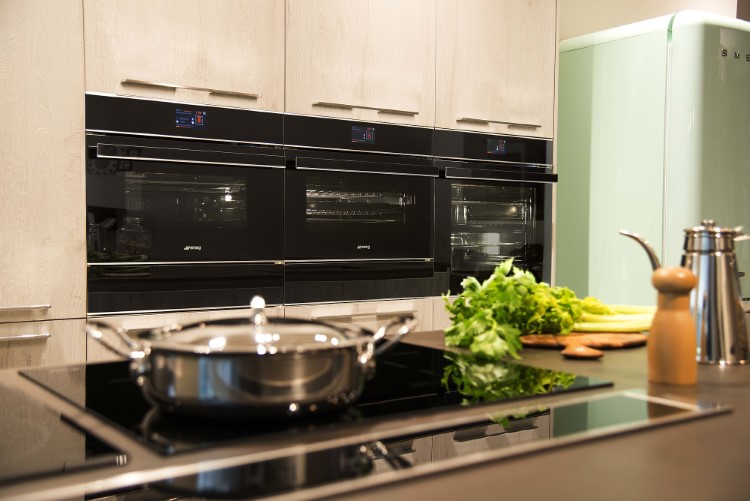A popular choice for clients planning their dream new luxury kitchen: a wine fridge. Practical and stylish, this is an appliance that continues to grow in popularity, so we thought we’d explore the benefits of adding a wine fridge to your new kitchen as part of your project.
In Britain there are around 26 million regular wine drinkers, according to a report by WineIntelligence.com. This number has declined in the last 5 years, but the fact remains that 49% of British adults are regular wine drinkers, which is a huge market.
It may come as no surprise to learn that in a recent survey of must-have features for a new kitchen, the wine fridge was in there as a very popular choice amongst those looking at a new kitchen project. In fact, more than half of all Kesseler clients opt for a wine fridge somewhere in their kitchen or utility area.
If you’re something of a wine conoisseur or even if you’re just partial to a bottle on a Saturday night, it could be time to introduce a wine fridge to your kitchen as part of your project. There’s a few things to take into consideration when making this decision, so let’s pop the cork and get started…

Why you might need a wine fridge
Although it seems obvious, a wine fridge is designed to keep your wine chilled to the ideal serving temperature. They come in a number of shapes and sizes to suit different kitchen styles, layouts and the customer’s preference.
When it comes to choosing your wine fridge, you can opt for an under-counter fridge that can be built into the cabinetry, or even in your island as in the image above. Alternatively, you can choose a tall freestanding unit or one that’s built into a bank of appliances at chest height, for easy access and nice display of your finest bottles.
As a general rule, you should use a wine fridge to store wines that you’ll be drinking relatively soon. They’re not really designed for long-term storage and if you purchase expensive wines you’ll be doing them a disservice by leaving them in a wine fridge for too long. A wine fridge aims to reduce the humidity which is fine, but not for too long. According to Into Wine,
“This lower humidity can dry out corks over time and shrink them, allowing oxygen to enter the bottle and reduce the quality of the wine,” says Into Wine. “You can monitor temperature and humidity in a wine fridge by using a special gauge inside the fridge. You can set the temperature between 7°C and 18°C, depending on what wines you are chilling.”

Can’t I just use my normal fridge?
As above, temperature is really important when it comes to storing wines. Although a regular refridgerator can have a customisable temperature guage, the temperature in your fridge will fluctuate wildly over time, as the door is regularly opened and closed, allowing warm air into the appliance.
A wine fridge will maintain the correct temperature for your favourite wine at all times – and this temperature can vary widely depending on your preferred tipple.
For example, a full-bodied red such as Cabernet Sauvignon or Malbec should be stored at 17°C whereas a dry white such as a Chardonnay or Sauvignon Blanc should be stored at 10-12°C. For sparkling wines such as Champagne, 6°C is recommended.
If you enjoy a mixture of wine types, it’s recommended to opt for a wine fridge with seperate cooling zones to allow you to have a variety of wines in one appliance.

Technology & features
A quality, modern wine fridge isn’t a simple appliance that’s just for temperature regulation. Many come with a whole host of contemporary features that enhance your wine drinking experience and allow you to embrace technology, as our kitchens and homes become smarter.
For example, some wine fridges (such as the Dolce stil Novo range from Smeg, shown above) have an optional sommelier drawer. This contains a wine pump, corks, wine pliers for Champagne and sparkling wine, corkscrews, thermometer and funnel. All essential accessories for a true connoiseur.
The smart connectivity allows you to enhance your wine drinking experience, with apps that allow you to adjust the temperature remotely, browse a wine list and look for pairing options.

Practical benefits
A quality wine fridge will likely cost between £750-£2000 depending on brand and features. However, if you’re a true wine connoiseur, the alternative would be to have a dedicated wine cellar, which isn’t possible with all properties. Or, if you’re short of space, a wine room or humidity and temperature-controlled area isn’t always practical or possible.
From a maintenance perspective, a wine fridge is a relatively low-effort appliance. They’re largely reliable and unlikely to require regular repairs or servicing. Individual components are usually inexpensive if something does go wrong, and many manufacturers offer fantastic warranties, giving you peace of mind.
So as you can see, if you enjoy your wines and want the fantastic benefits of having a wine fridge in your new kitchen, it’s definitely worth speaking to your designer when they’re putting the plans together as this appliance can be considered essential for any wine enthusiast.

Planning a kitchen project?
Speak to a designer from your nearest Kesseler showroom today to ask all the burning questions you may have about your project or kitchens in general.
YOU MAY ALSO BE INTERESTED IN...

Boiling water taps: which is best?

